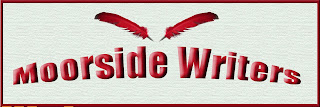Art isn’t there to be useful, in museums or
otherwise, but other people’s creativity can be rewarding for a writer, whether
or not s/he enjoys what they have created. Rarely have I come away from an art
gallery without feeling stimulated to write. The Moorside Writers’ Group visit
to The Hepworth Museum left me with at least half a dozen ideas which could
lead to short stories.
Hannah Duguid, reviewing the Hepworth exhibition
of Dana Schutz’s paintings [The Independent Sat. Nov 22nd] says that this artist ‘...makes paintings
with ideas that should be unusable...’ exploring ideas that ‘...might be
considered anti-social.’
The
works certainly demand attention, not only for being large and colourful but
for being enigmatic. I didn’t understand all of them and they are not the sort
of pictures I would want on my walls but they did make me think.
‘Butterfly’ depicts a disturbing image of young
boy pulling apart a bright butterfly. His head, filling two thirds of a square
canvas, seems to have been constructed from two dissimilar halves joined,
uneasily together. The left and right side of the brain perhaps? The right
brain will tell you that nothing can be fully comprehended unless taken to
pieces and examined; the left brain will remind you that precious things are
best enjoyed intact.
Story idea – a character tempted to dissect a
relationship in order to determine how it works and whether it will endure.
‘Getting Dressed All At Once’ shows a figure
surrounded by a whirl of clothes and shoes.
Story idea – a character battling with the
confusion of old age.
‘Occular’ was another disturbing image showing a large head, of
indeterminate gender, in falling snow. Where you would expect to see the eyes,
was a pair of side-opening, casement windows.
Story idea – a character gaining insight by
looking, unblinkered, at something or someone for the first time.
I haven’t
come across the work of Albert Wainright before and very much enjoyed the
delicacy of his careful, almost diagrammatic, watercolours. ‘Boy in Theatrical
Costume’ showed a lad with a ‘Look at me!’ expression on his face.
Story idea – a character who comes across to
others as being self-obsessed and dramatic but whose look-at-me demeanour is a
disguise for feelings of inferiority.
Both Hepworth and Moore’s sculptures often
contain apertures which give a series of changing frames through which the rest
of the world can be viewed.
Story idea – a character reflects his/her
changing view of the world as s/he has grown older and more experienced.
On a second walk around the galleries, I noticed a middle-aged woman, chewing gum and
stomping behind her male companion, saying little but staring in disbelief at
the paintings. Her expression epitomised that well-know attitude to modern
art - I know what I like and this isn’t
it.
Story idea – something positive happening to a
character in an art gallery despite her/his initial hostile reaction to the
exhibits.
Talking to one of the curators about Matthew
Darbyshire’s installation was fascinating. The placing of W.A. Ismay’s huge
collection of pots amongst the kind of modern ‘white goods’ which Isamy never
owned was apparently intended to make the viewer wonder about what we value.
Ismay believed that pots contain the spirit of the person who created them.
Darbyshire asks us to wonder if the same can be said of utilitarian items,
mass-produced but also originating in a creative mind.
Story ideas –
do possession define us?
-
what we leave behind – also the title of a Wainright painting
-
how do humans relate to inanimate objects?
-
how do objects relate to the humans who use them?
Conclusion? Even if art doesn’t exist to be
useful, for a writer artistic expression of all kinds can be very useful
indeed.
Heather Shaw







